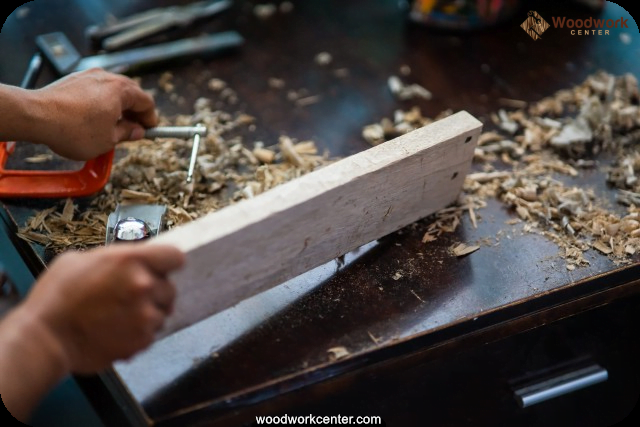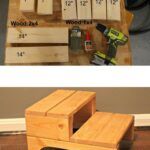Introduction to Woodworking Router Jigs
Woodworking router jigs are specialized hand tools, designed to assist with a particular purpose in the construction of wooden projects. They have been around since the late 19th century, and were initially used by professional cabinetmakers and joiners. With their widespread use, they have evolved over time and are now used by many hobbyist woodworkers.
Router jigs allow for greater precision, accuracy, repeatability and consistency when routing shallow cuts into wood. Some of the most common applications include routing straight edges (for dados/grooves or rabbets), making rabbet joints or box joints, hinge mortising, dovetailing work and joinery work.
A variety of different types of router jigs are available on the market today which can be tailored to specific tasks you might want to complete. Examples include edge guide jigs which can help to create precise straight lines and edge shaping bits, corner router jigs for creating intricate custom rounded corners on projects, template guides which provide a template-like shape for guiding the cutting path of a router bit; dovetail jigs for producing dovetail joints that require precise measureable angle sets; doweling jigs which enable quick drilling pin holes on boards or even steel reinforced holes; inlay kits which enable users to accurately cut out intricate shapes from one board then tile it into another board (to produce an inlaid pattern); biscuit joiners that allow joiner biscuits to be quickly added too boards without having to calculate angles; as well as other specialty jigs such as chamfer routers for beveling edges or pattern routers which allow woodworkers to create special designs through the creative use of a freehand route guide plate, Mortise-and-tenon door frames construction jig etc.
Router Jigs allow craftspeople who don’t always have access to more expensive power tools like routers or planers to still get very accurate results while working on their projects. Increasingly popular with DIY’ers – especially home improvement enthusiasts – many online stores now offer these handy tools at quite affordable prices!
Different Types of Router Jigs
Plunge jigs are the most common types of router jig and can be used to accurately create a variety of shapes and cuts in wood. This type of jig works with a router and drill bit to cut curves, plunge straight lines, or mill curved dadoes. They are ideal for creating intricate moldings, rabbets, door pulls, frames, furniture and cabinet panels, signs and more.
Hollows & rounds jigs are designed to create precise hollow sections in wood such as dovetails or wooden arches. The routed section is usually deeper than what could be achieved if using a plunge router jig because the bit starts further away from the face of the material being cut.
Mortise jigs are also called pocket-hole jigs because they allow you to quickly and easily create pockets, mortises and other angles in woodworking projects. Mortise jigs come with a special guide plate that has hole templates that match pre-drilled pilot holes so your workpiece is secure when drilling multiple routing operations.
Finally, edge forming jigs are great for crafting decorative edges on woodwork pieces like doors or boxes without requiring complex carpentry skills. These specialty router attachments feature several interchangeable template guides that raise the cutter right up to the edge of the workpiece creating smooth detailed profiles such as ogees or roundovers.
Benefits of Using a Router Jig
Increased Accuracy – Using a router jig is arguably the most efficient way to get precise cuts, within a fraction of an inch. Router jigs provide users with consistent results that are much more accurate than attempting to cut wood using only hand tools or by eye. With a good router jig, you can measure and set up the depth of your cut long before actually cutting the piece of wood, allowing for exact measurements every time with virtually no margin for error.
Increased Versatility – With woodworking increasingly moving towards intricate pieces with complex shapes, using a router jig becomes even more important as it allows users to make complex joints and cuts with ease. Whether it’s a dovetailed joint or an angled mortise and tenon, users can employ the use of specialized jigs to ensure precise angles, corners and edges – making their projects look professional and precise.
More Intricate Projects – For those more ambitious tasks such as building furniture, cabinetmaking or working on detailed cabinetry then utilizing a variety of different router jigs become essential; as they offer added accuracy over standard saw blades and permit users to make intricate shapes quickly while also having full control over their movements when in motion. Also precision-made router tables featuring moveable fences help in orienting your wood in intricate positions so you can accurately cut out complex shapes.
Essential Router Jig Techniques
Woodworking router jigs are an essential tool for any woodworker to quickly and easily make complex patterns, joints, and shapes in wood. Commonly used for making furniture parts, as well as intricate moldings and carvings, these tools are incredibly versatile.
Essential joinery is a key use of router jigs. By using the right combination of bit sizes and thicknesses, a router can be used to create mortise and tenon joints, dowels and more. Profiling edges is another very common Router Jig application. An edge profiling jig allows you to quickly run many pieces of stock along the same profile without having your hands dangerously close to the spinning bit while doing so. Finally, creating flutes is much easier with a jig matched to that specific task – this creates a uniform groove pattern throughout your workpiece with as little hand sanding as possible at the end.
Aside from these typical uses there is also an endless possibility for experimenting when it comes to router jigs – many craftsmen use them for freehand routing shapes, making dovetail boxes or trays, or even creating ornate embellishments on furniture pieces like chairs or headboards. With the creativity of the woodworker behind them (and some careful planning), router jigs are one of the most useful woodworking tools around.
How to Choose the Right Router Jig for Your Project
When choosing a router jig for your woodworking project, there are some key factors to consider. Firstly, the type of material you will be using is essential in determining which router jig is best. If you are using a hardwood such as oak or cherry, lighter alloys and plastics may not hold up to wear and tear caused by the pressure of more powerful routers. However, if you plan on working with softer woods like pine or plywood, then lighter materials should be adequate. Secondly, you must consider what type of cuts your project requires. If intricate shapes and exact straight lines are important to your project, then plunge routing may be necessary; this will limit the choice of jigs since those designed for table routing alone don’t handle plunging well. Moreover, you should consider which features have been included in each router jig model; for example, some have adjustable edges that make it easier to work along fences and round edges while others come with measurement and depth-setting accessories that offer more precise results when cutting curves or specific depths into the wood material. Lastly, budget must also be part of the decision process as different levels of quality come at different price points; some jigs can handle heavy use while others are simply meant for amateur projects where rough accuracy is enough.
Tips for Enhancing and Maintaining Your Router Jig
Tool Storage: To ensure the longevity of your router jigs, it is important to properly store them. This includes protecting them from dust, heat and moisture by keeping them in a dry place. Ideally, a workshop cabinet or box should be used to store the jig and related accessories. Additionally, a tool-box organizer with removable compartments allows easy access when needed.
Keeping Jigs Balanced: When moving your jig around your workspace, it’s important to keep it balanced to avoid any damage. A good way to do this is by wrapping two hands around its center of gravity while lifting and setting it down.
Proper Maintenance: Keeping your router jig maintained can help ensure years of safe, accurate use. Proper maintenance involves cleaning the jig periodically from dust and removing chips from components. Always use fresh blades on the cutting edges before using the tool for best results; make sure all blades are sharpened before each use as well. Lubricate any moving parts with lubricating oil every few months or when necessary for smooth operation without noise or strain on the machine parts.
Woodworking Techniques: It’s helpful to know proper woodworking techniques prior using your router jig so you can get optimal performance out of it. Reading up on proper instructions for setup and learning about some different routing techniques can go a long way towards improving accuracy and speed when working with wood pieces. Pay attention to details such as layout accuracy, cutting speeds and depths–knowing these factors can help you achieve clean cuts every time.
Router Jig Safety
When operating a router jig, it is important to take proper safety precautions to ensure the job runs smoothly and without any harm or injury. The first precaution is to wear safety gear such as safety glasses, ear protection, and dust masks. This will protect your eyes, ears, and lungs from any possible debris that could fly into the air during operation.
It is also important to pay attention to your surroundings while using a router jig. Make sure your work area is properly swept and cleaned so there are no objects on the ground that may become entangled with the router’s bit or cause an accident when operating the machine. Additionally, always be aware of where your hands are in relation to the spinning bit.
Finally, before starting a woodworking project that requires you to use a router jig make sure you have the correct type of jig for the job as well as all of its accessories including bits and templates so everything fits together correctly during operation. Doing this will help ensure that everything goes off without a hitch and prevents possible damage or accidents from occurring due to improper setup or mismatch pieces.
Conclusion
Router jigs are an essential tool in woodworking and can be used to create intricate shapes and objects. Router jigs provide an excellent way to work with wood, providing smoother cuts and more precise shapes than hand tools alone. Router jigs offer better angles and straighter lines when working on a piece of wood. The steady speed of the router bit minimizes kickback, allowing for greater accuracy and stability when creating contours and inside curves. The use of router jigs also speeds up production time, allowing for larger projects to be completed in shorter amounts of time. Additionally, the ability to customize the cutting depth makes it easier to reproduce designs multiple times. Finally, router jigs provide additional security, as complex projects that require precision can be cut safely at a consistent speed, reducing the chance of error or injury due to sharp tools.

Hi everyone! I’m a woodworker and blogger, and this is my woodworking blog. In my blog, I share tips and tricks for woodworkers of all skill levels, as well as project ideas that you can try yourself.





